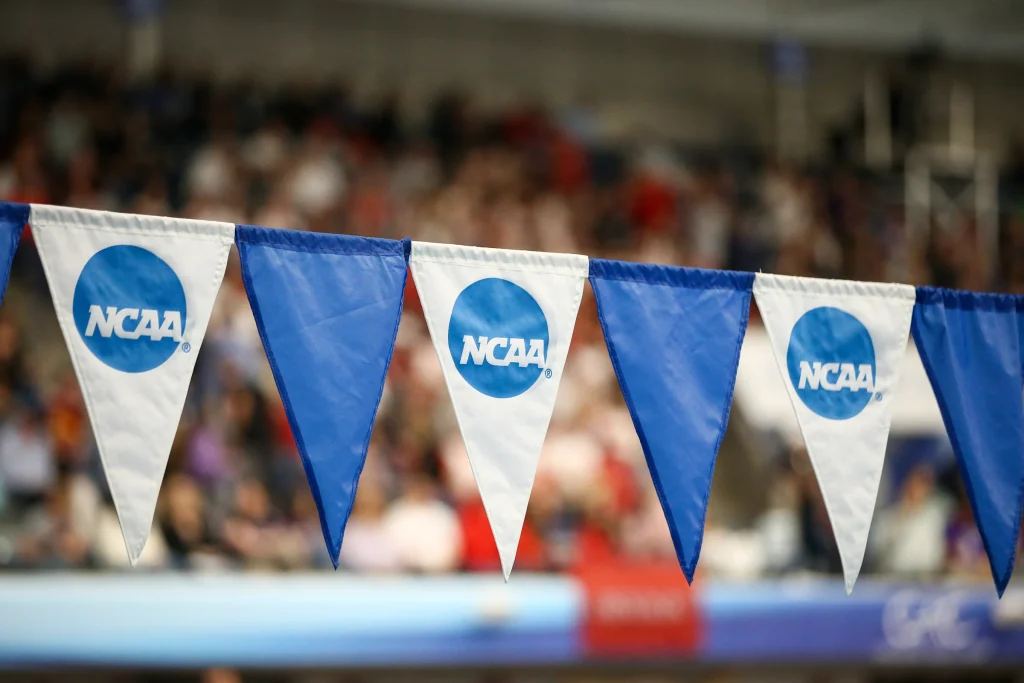NCAA Faces New Challenge: Proposal to Phase In Roster Limits After Controversial Settlement

The NCAA is facing another crossroads as it works to implement changes under the House settlement, particularly regarding the issue of roster limits. After months of deliberation and roster cuts at various schools, there’s now a new proposal on the table to phase in the new roster limits, which could significantly impact athletes’ opportunities.
Following the House v. NCAA settlement, which could allow schools to begin sharing revenue with athletes, the NCAA imposed new roster limits to control the number of athletes on each team. However, these limits have been met with significant resistance, with many athletes and coaches voicing concerns about the negative impact on current rosters, athletes who have already been cut, and incoming recruits.
Grandfathering-In Proposal: What Does it Mean for Athletes?
The latest proposal under discussion involves a “grandfathering-in” strategy to protect athletes who are currently on rosters, those who have already been cut this year, and possibly some high school recruits who had committed to schools based on the expectation of having a roster spot. The new plan could allow these athletes to retain their spots despite the implementation of the new roster limits.
This move comes after the NCAA received pushback from athletes, coaches, and athletic directors, especially after some teams made early roster decisions based on the preliminary approval of the settlement. According to various sources, the proposal would phase in the roster limits gradually, ensuring that current players and recruits would not lose their opportunities due to the new restrictions.
However, there are still several uncertainties surrounding the proposal, including whether this grandfathering process would be mandatory or optional for schools. Furthermore, questions remain about what will happen to athletes who have already transferred or committed elsewhere, and whether high school seniors who had made commitments to certain schools will be affected by the new limits.
The Challenges of Implementing Roster Limits
Athletic directors and coaches have been faced with the challenge of adjusting to the new rules while still making decisions that align with their teams’ goals for the future. At many schools, roster decisions have already been made, leading to changes in budgets and staffing. These moves were made with the understanding that roster cuts were inevitable, but now schools must figure out how to undo these changes if the grandfathering plan is approved.
Baylor’s athletic director, Mack Rhoades, expressed his concerns about the difficulty of going back on these decisions. “It makes it difficult because there are institutions— including ourselves— that have already had conversations with head coaches about roster limits,” Rhoades said. “How do you go back to do that?”
The Impact on NCAA Sports and Financials
The NCAA and power conferences were tasked with introducing new roster caps as part of the settlement, which is largely aimed at preventing legal challenges related to scholarship restrictions. However, there are concerns that the move is largely driven by financial considerations. The NCAA estimates that eliminating roster spots could save schools millions annually, as walk-ons and partial scholarship athletes cost significant amounts for medical, travel, and food expenses.
The new proposal, which would allow schools to have more flexibility with their rosters, is expected to address some of these financial issues while also maintaining fairness for athletes who have already been placed on teams. But the financial aspect of the proposal has raised concerns about whether some schools may exploit the new rules to stockpile players, leaving others with fewer opportunities.
Uncertainty Surrounding the Grandfathering Proposal
While the specifics of the new plan remain unclear, it’s expected that the attorneys involved in the settlement will present their response to the court soon. They have a deadline of next Wednesday to submit a brief that addresses Judge Claudia Wilken’s concerns about roster limits, ensuring that athletes already on teams are not unfairly impacted by the changes.
One of the key issues still being debated is how long the grandfathering provisions will last. Some believe that these protections should extend for the full duration of an athlete’s eligibility, while others argue that they should be limited to a certain number of years. Further complicating the situation is the impact of Title IX, which requires gender equity in college athletics. The proposed grandfathering plan could inadvertently create disparities between men’s and women’s sports, and NCAA officials are working to ensure that any changes comply with the law.
What Comes Next for NCAA Roster Limits?
As the deadline for filing the responsive brief approaches, the NCAA and power conferences are under pressure to come up with a solution that satisfies all parties involved. Athletic directors like Michigan’s Warde Manuel have voiced support for a gradual implementation of the roster limits, which could give teams more time to adjust to the new rules without disrupting their programs too much.
“The logistics of no roster limits are simpler than grandfathering and everyone carrying different rosters for the next four years,” said Nebraska athletic director Troy Dannen. “There are schools, programs, and coaches who are going to have to undo some of those conversations.”
Uncertainty Remains, But a Solution is Needed
The NCAA’s attempt to implement new roster limits is still very much in flux, and there’s no clear timeline for how these changes will play out. The proposal to grandfather in athletes currently on teams has sparked a new round of debates, and the NCAA will need to find a balance that ensures fairness while meeting legal and financial goals. As athletic departments continue to adjust, the future of college sports could be dramatically shaped by these changes.

